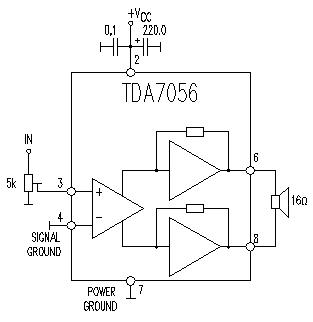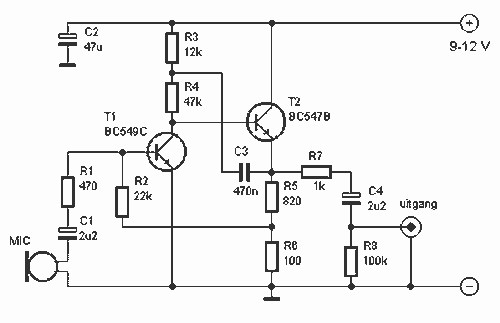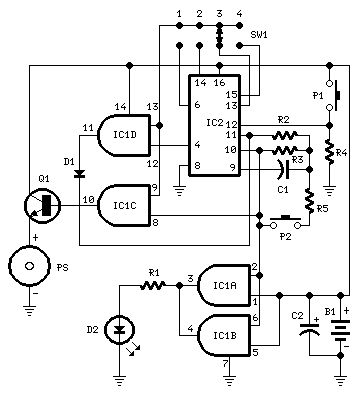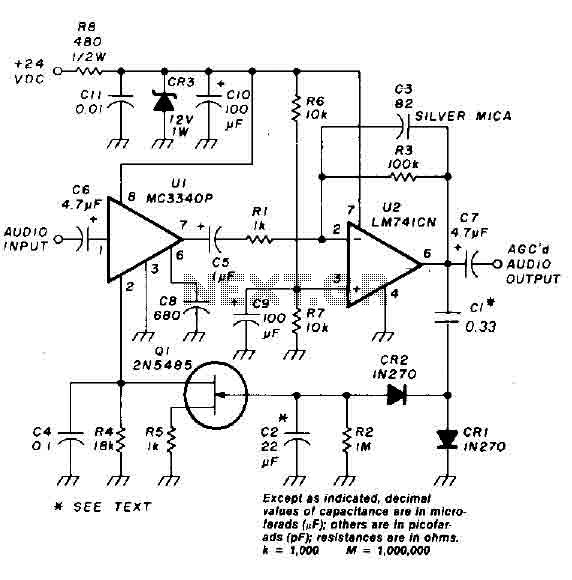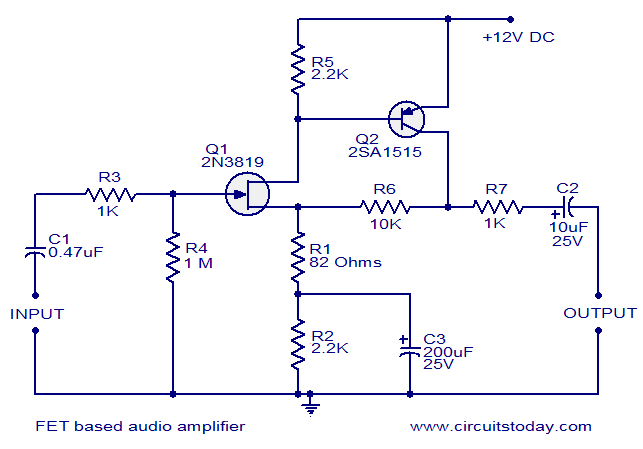
High gain microphone preamplifier electronic project
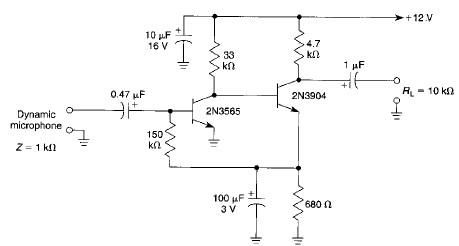
This microphone preamplifier electronic project is based on transistors and is capable of approximately 70 dB or more gain at audio frequencies. The gain of this circuit is roughly equal to the product of the hfe (current gain) of both transistors multiplied by the ratio of the load resistance to the input resistance of the preamplifier. For most applications, these resistances typically have similar values (ranging from 2 kΩ to 5 kΩ), allowing this ratio to be considered as unity.
This microphone preamplifier circuit utilizes two transistors configured in a cascade arrangement to achieve high gain. The choice of transistors is critical, as their hfe values directly influence the overall gain of the circuit. Common transistor types such as the 2N3904 or BC547 may be employed, given their suitability for audio applications.
The input stage of the preamplifier is designed to accept low-level audio signals from various sources, such as microphones. The input resistor is connected to the base of the first transistor, providing the necessary biasing for optimal operation. The load resistor is placed at the collector of the second transistor, which serves to convert the amplified current into a voltage signal that can be further processed.
Capacitors are used in the circuit to block DC components while allowing AC signals to pass, ensuring that only the audio frequencies are amplified. Additionally, bypass capacitors may be included to stabilize the power supply and reduce noise, enhancing the overall performance of the preamplifier.
The output of the preamplifier can be connected to subsequent audio processing stages, such as equalizers or mixers, where the amplified signal can be further refined. The design of the circuit should also consider the power supply requirements, typically operating at low voltages (e.g., 9V to 12V), ensuring compatibility with portable audio devices.
In summary, this transistor-based microphone preamplifier circuit is an effective solution for amplifying audio signals, achieving significant gain while maintaining signal integrity, making it suitable for a variety of audio applications.This microphone preamplifier electronic project is based on transistors and is capable of about 70dB or more gain at audio frequencies. Gain of this circuit is approximately equal to the product of the hfe of the both transistors times in the ratio of the load resistance to the input resistance of the preamp.
As an approximation, these resistan ce are usually similar in value (2 to 5k) for most applications, so this ratio can be taken as unity. 🔗 External reference
This microphone preamplifier circuit utilizes two transistors configured in a cascade arrangement to achieve high gain. The choice of transistors is critical, as their hfe values directly influence the overall gain of the circuit. Common transistor types such as the 2N3904 or BC547 may be employed, given their suitability for audio applications.
The input stage of the preamplifier is designed to accept low-level audio signals from various sources, such as microphones. The input resistor is connected to the base of the first transistor, providing the necessary biasing for optimal operation. The load resistor is placed at the collector of the second transistor, which serves to convert the amplified current into a voltage signal that can be further processed.
Capacitors are used in the circuit to block DC components while allowing AC signals to pass, ensuring that only the audio frequencies are amplified. Additionally, bypass capacitors may be included to stabilize the power supply and reduce noise, enhancing the overall performance of the preamplifier.
The output of the preamplifier can be connected to subsequent audio processing stages, such as equalizers or mixers, where the amplified signal can be further refined. The design of the circuit should also consider the power supply requirements, typically operating at low voltages (e.g., 9V to 12V), ensuring compatibility with portable audio devices.
In summary, this transistor-based microphone preamplifier circuit is an effective solution for amplifying audio signals, achieving significant gain while maintaining signal integrity, making it suitable for a variety of audio applications.This microphone preamplifier electronic project is based on transistors and is capable of about 70dB or more gain at audio frequencies. Gain of this circuit is approximately equal to the product of the hfe of the both transistors times in the ratio of the load resistance to the input resistance of the preamp.
As an approximation, these resistan ce are usually similar in value (2 to 5k) for most applications, so this ratio can be taken as unity. 🔗 External reference
